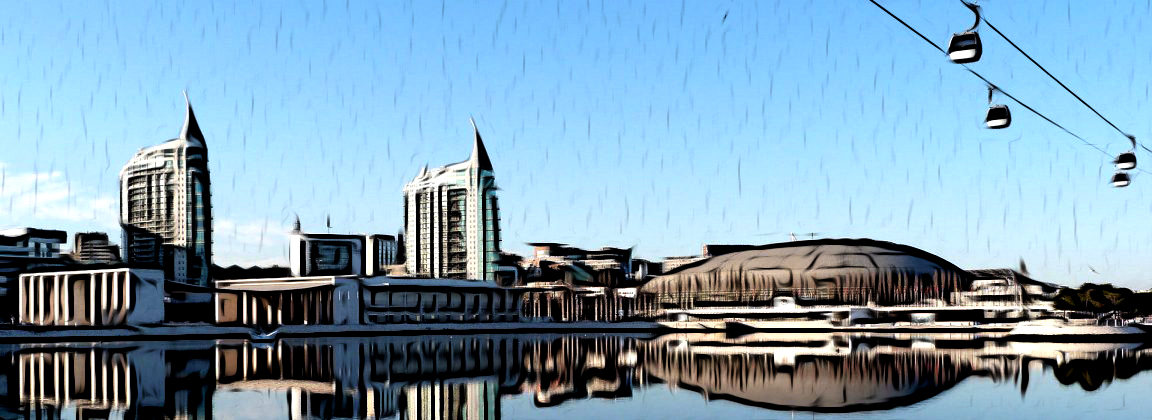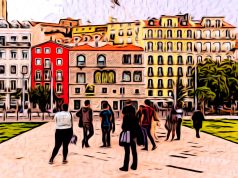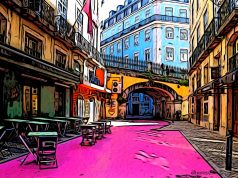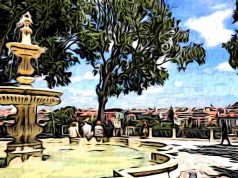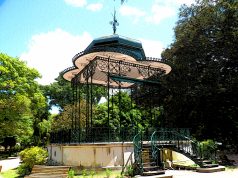The Parque das Nações (Park of Nations) is the spectacularly modernized side of Lisbon, a city of history and traditions. The park spreads along the north-eastern side of the Tejo inlet. Its precinct was reclaimed from an industrial wasteland for Expo ‘98, and has since been become the central scene of the contemporary Portugal. The motif was “The Oceans: A Heritage for the Future”, and the whole section at the eastern end of the city’s oceanfront was rebuilt for the event. When it was over, the new urban district was named Parque das Nações, representing one of the largest urban evolution projects in Europe.
Instead of being left as isolated offices and a quiet neighborhood, the original Expo attractions have been augmented, and today the area is popular among locals and tourists alike. Most visitors reach here by metro which stops at the stunning Oriente Station. From there, many are drawn to the Vasco da Gama Shopping Center or head straight to the several popular attractions in the area. The main focus of the visit is the state-of-the-art Oceanarium, dubbed the world’s most impressive aquarium.
1Oriente Station – A stunning modern station
The Parque das Nações Lisbon is easy to travel to, as it is served by the Gare do Oriente station. The Gare do Oriente contains a metro (red line), bus and major train station, spread over three levels of the ultra-modern steel and glass structure. The metro is the easiest method of travel from the historic and tourist districts of Lisbon. For late-night revelers, there are always lots of taxis waiting to pick up passengers. Then, you can use the park’s authentic cable-car.
2Lisbon Oceanarium: An odyssey of sea creatures in a state-of-the-art building
It is one of the greatest tourist attractions of the capital. The complex comprises of a massive central tank and four outer tanks that represent the four oceanic ecosystems. The range of fish is outstanding and highlights include the playful sea otters, menacing sharks, clumsy penguins, and deep-sea crabs. The ticket price may seem quite steep at €16.20 for an adult ticket but it is worthy of the cost. It’s best to avoid the Oceanarium at the weekends when it can get very crowded.
3The Vasco da Gama Tower: The city’s tallest building with a panoramic viewing platform
This tower is Lisbon’s tallest building but since it’s located on the banks of the inlet, it doesn’t seem like that. There was once an exclusive rotating restaurant and viewing platform at the top but this is closed now; hopefully, with the construction of the new 5-star hotel, this great viewpoint may one day re-open. The tower represents a ship’s mast.
4The Vasco da Gama Bridge: One of the world’s longest bridges
You can walk along the waterfront, past Vasco da Gama Tower, all the way to Vasco da Gama Bridge, where there are pleasant gardens and lawns to sit and admire the magnificence of the bridge and the river. The bridge was constructed to relieve the traffic from the Ponte de 24 Abril suspension bridge, and opened to coincide with Expo 98. The bridge has a total length of 17km and at its opening, it was Europe’s longest bridge.
5Jardins Garcia d’Orta
The small gardens of Garcia d’Orta represent five different countries discovered by Portuguese explorers: Brazil, Goa, Mozambique, Indonesia, and the Azores. All of the plants and styling of each of the gardens reflect their country of origin, and many species are non-native to Portugal.
6The Pavilhão do Conhecimento
This is a science museum, which focus more on interactive displays than wordy descriptions. The museum is solely designed for children since it’s a modern and engaging science museum with lots of hands-on activities, but parents will not be bored as the exhibits are creative and intelligent. The entrance fee is €9.00/€6.00 (adult/child) and is again worth the admission fee.
How To Buy Property in Portugal:Read the Guide Buying Property in Portugal

